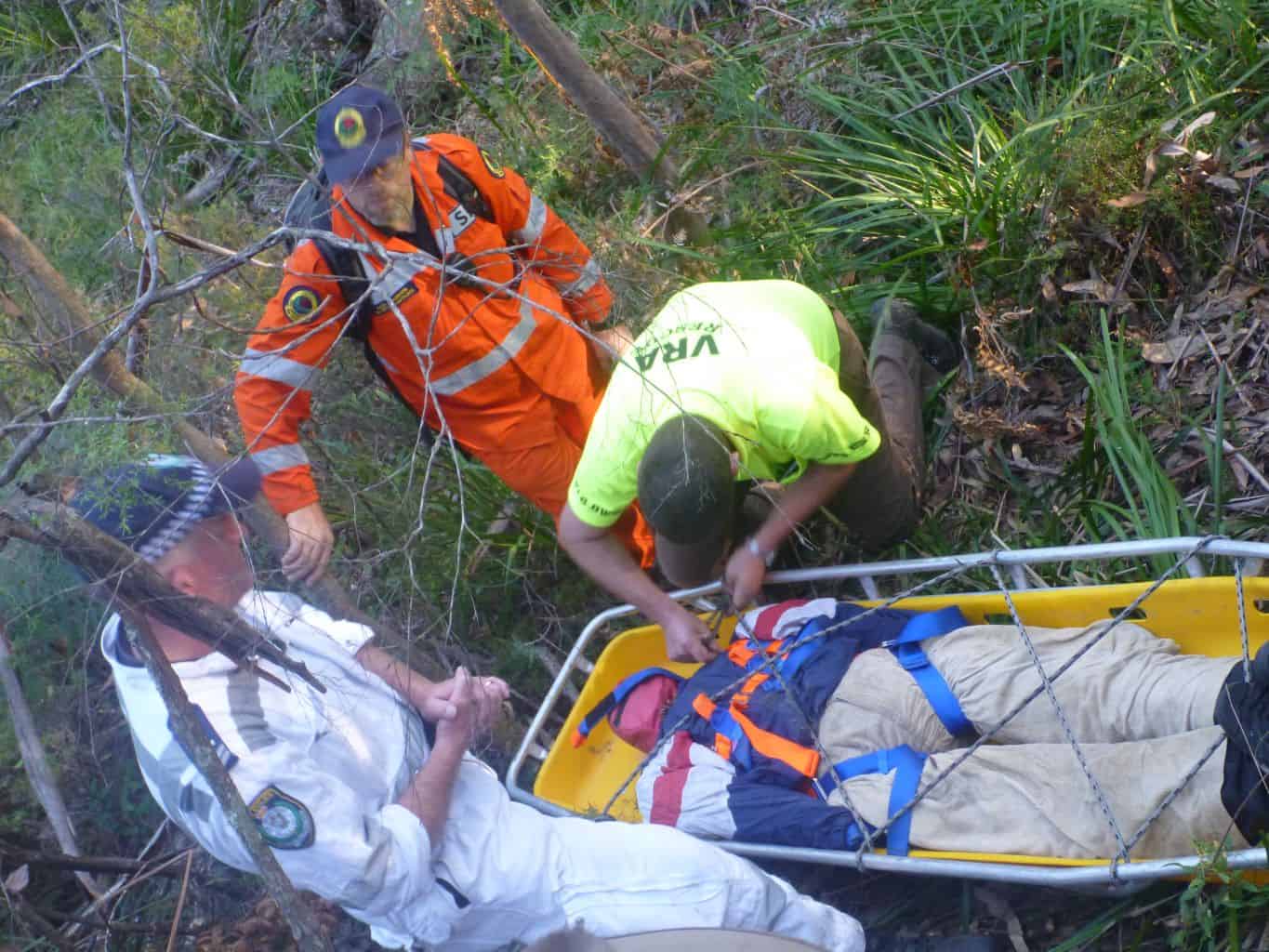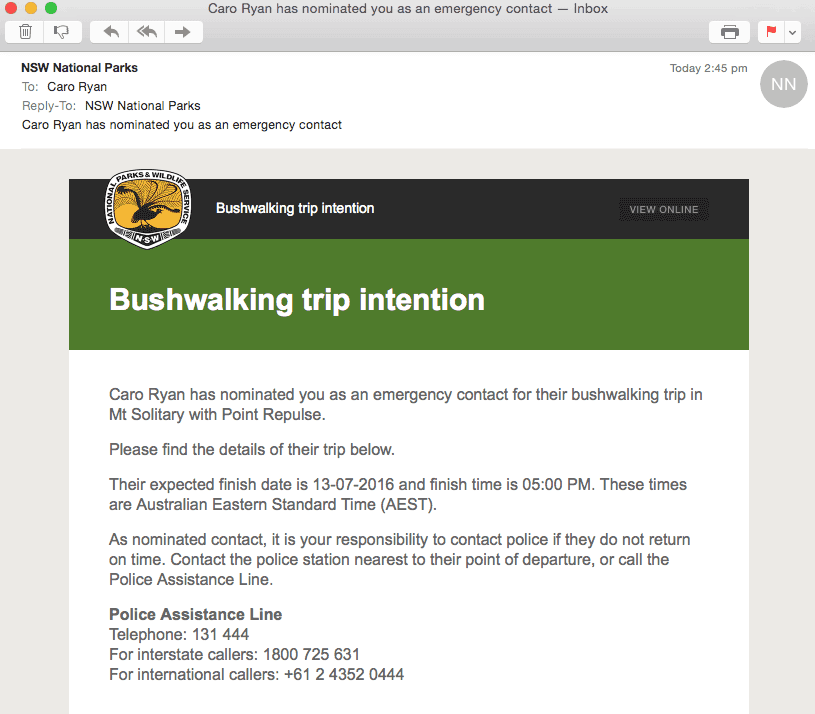Or “How to get unlost” when bushwalking
In 1987 pioneering Aussie bushwalker and businessman Paddy Pallin wrote a book called, ‘Never Truly Lost’. It’s a classic from the traditional style of bushwalking (what many now refer to as ‘hiking’… oh, the controversy!) and as a statement, touches on the soul of what it means for many of us to be in the bush. For the well equipped and experienced bushwalker, it means that if we find ourselves navigationally challenged or geographically embarrassed, it means we are still at peace – even when things go pear-shaped.
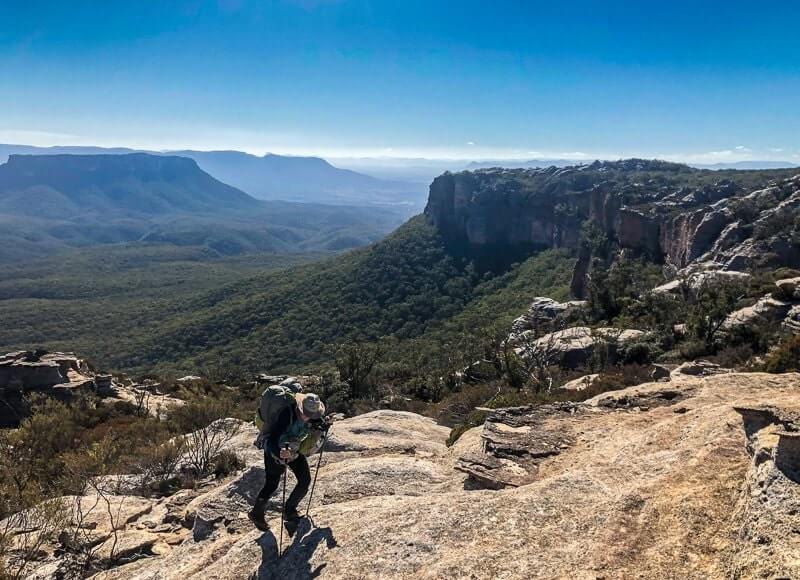
Whether you’re a track walker or wild walker who prefers to make their own way (regardless of your years of experience), chances are that at some stage you will find yourself questioning where you are.
If you’ve ever been in that situation, you’ll know the feeling of blood suddenly draining away and that near-miss-car-crash adrenalin whoosh that comes from realising you are not where you thought you were and aren’t quite sure what to do about it.
Don’t worry, you’re not alone. (Well, maybe you are!) Most of us have been there at one time or another.
The truth is, with the technology available to us today and by applying some basic principles, there’s no reason for us to stay lost for very long or for it to end in tears.
Here’s the essentials of getting un-lost:
Before you leave
- Always tell someone where you’re going. Get specific and let them know:
- what track or route you’re planning to take
- who’s with you
- when you’ll be back
- and then don’t forget to let them know when you’re out safely
- Give this person a plan of what you’d like them to do if they don’t hear from you by a certain time. Eg. ‘I expect to be out by 5pm with mobile coverage and will send you an SMS or call. If you don’t hear from me by 10pm and can’t raise me on the phone, call xxxx’ [other friend on the trip, local police station, etc].
- Pack everything you need for the walk and think about contingencies in case you’re delayed. Here’s a link to my free packing lists.
- Download the Emergency+ App for Android or Apple iOs.
- Download a smartphone navigation app AND the relevant topographic map for the area you’re going. [Hot tip: Go to flight mode and check the map loads correctly and you can see all the details.]
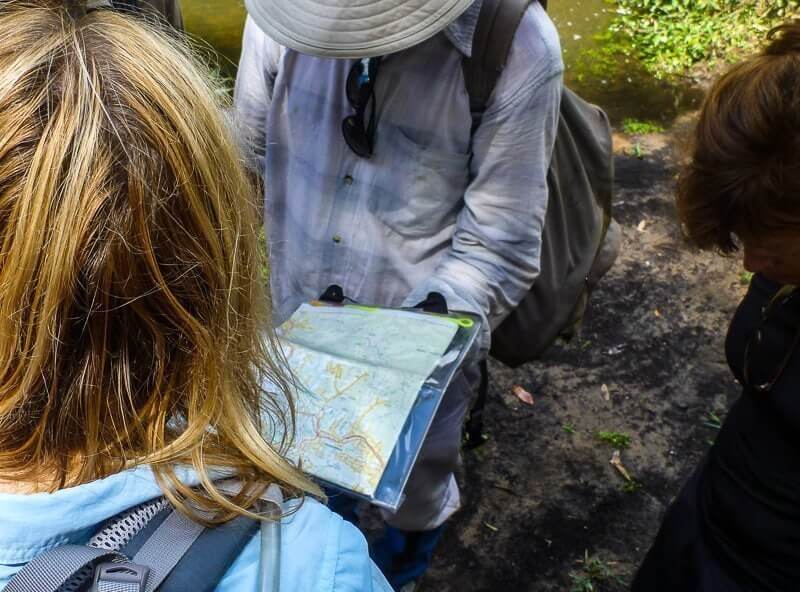
Then, when you’re out there and at the very first hint or hunch that something’s not looking right, stop. Don’t just go with it and hope the route will work out. There’s a saying that people will start to, ‘bend the map’ or ‘bend their compass’, to try and make what they’re seeing and experiencing on the ground, add up to the map. Don’t leave it… act immediately. Assess your nav, check the map, a GPS or nav app before you keep going.
“If something doesn’t seem right, chances are it’s not.”
Sergeant Dallas Atkinson, Blue Mountains Police Rescue Squad
Once you realise you’re lost
- Stop. Breathe. Don’t panic. Sit down and calm down so you can think clearly – don’t rush to make a decision. It’s important that you think and act calmly and methodically, so you can make well thought out decisions. The SAS teach their soldiers to sit down and make a cup of tea! It’s actually a great idea as you’re not only hydrating, but forcing yourself to stop. Let’s face it, when was caffeine ever a bad idea especially when it’s a comforting and warming cuppa!
- You have two choices:
- Attempt self rescue or
- Call in the Cavalry

Attempt Self Rescue
- Note the time (a good reason for having pen and paper in your kit! Perhaps even a ‘Rite in the Rain’ notebook and pen or pencil you can whittle to a point if it breaks).
- Take stock of your resources and current situation (food, water, weather/temps, clothing/layers, shelter, time of day, fatigue or injuries).
- Check: Do you have mobile phone coverage? How much battery life is left? [Battery or solar power packs are a great addition to your pack, just make sure you keep them in a waterproof bag].
- Think: When was the last time you ‘knew’ where you were? When did you stop paying attention to your surrounds?
- Recce: If you think you may know which direction the track is or where you need to be, set a time limit and recce to check it out eg: “I reckon the track is just over there somewhere, I’ll go for 15 mins and see if I can find it”.
- Look: Is there high ground that you can safely get to so you can look for clues or try for mobile phone coverage? (Eg: Man made structures like power poles, can you hear roads, people, trains?)
- Reassess after the 15 minutes. Have you ‘found yourself’? If not, do you still have adequate resources and daylight to attempt another recce in a different direction? Will delaying calling the cavalry affect the well-being of yourself or the group?
- Monitor: Your mobile phone coverage and battery: If you move from this location to attempt self rescue, you might lose coverage and then not be able to call the cavalry if you need to. Waiting until you only have 10% battery left isn’t ideal.
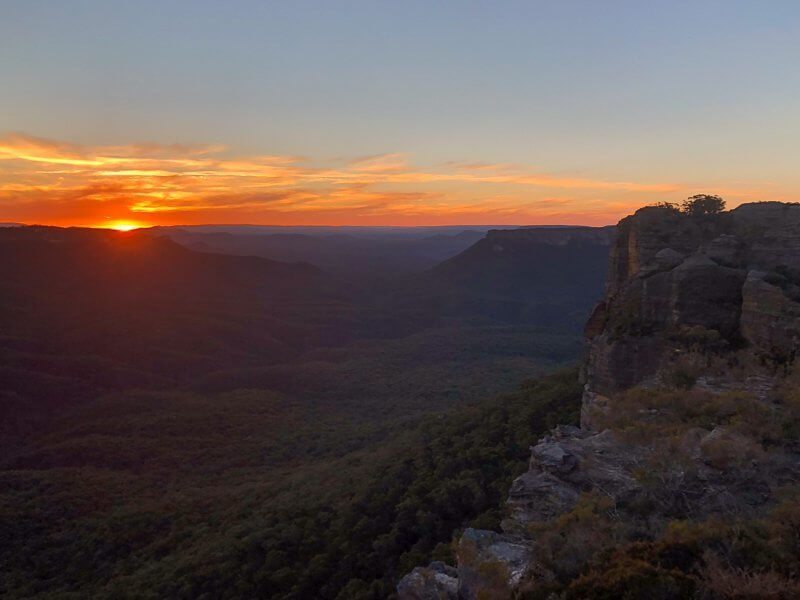
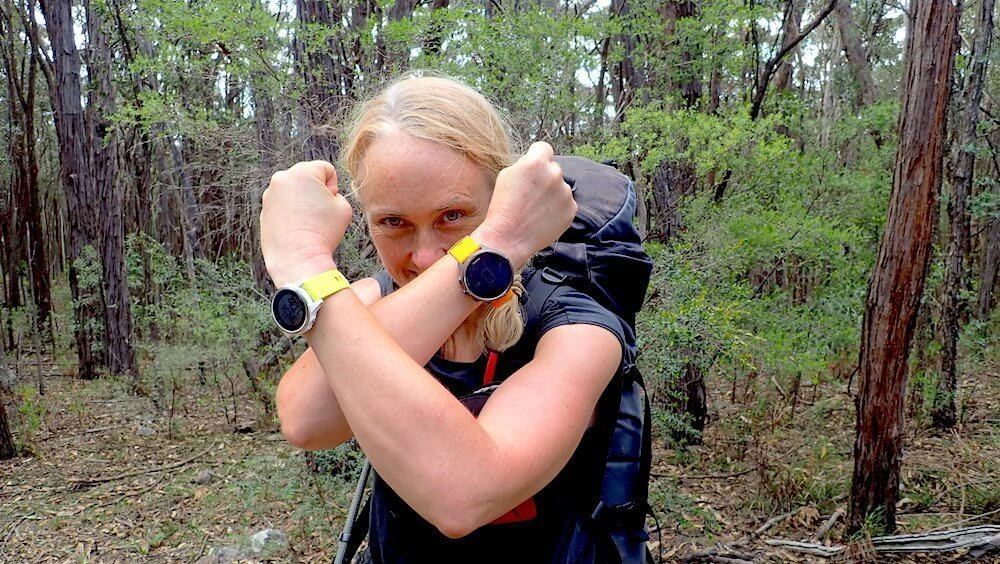
Calling the cavalry
Knowing when to call for help can be a tricky thing. Some people are scared of putting the emergency services out or ‘Don’t want to be a bother’. The thing to keep in mind is that although 000 is for life threatening emergencies and you currently may not be in that situation, if you delay, it could quickly lead to that through hours of remaining daylight, availability of water, injuries, fatigue or changing weather conditions.
The best bit of advice I have heard is from Sergeant Dallas Atkinson, the Co-ordinator of the Blue Mountains Police Rescue Squad:
“If you’re thinking that you need to call in the cavalry, you probably should.”
Sergeant Dallas Atkinson, Police Rescue, Blue Mountains
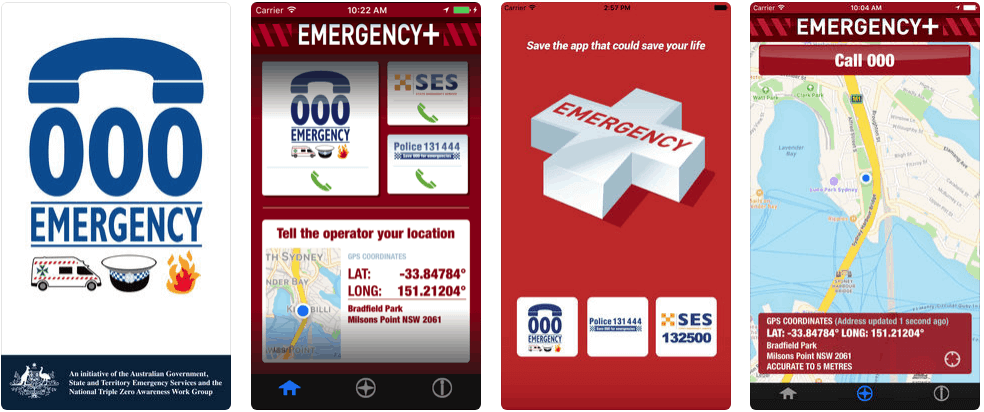
- Move to a nearby clear area if possible.
- Try calling 000 and ask for the Police using the Emergency+ App. It displays your location in latitude longitude that you can give to the 000 operator.
- If you have limited phone coverage, try sending an SMS to the friend you gave your intentions to or another trusted buddy. Ask them to contact 000 with the details of your trip.
- If there’s no coverage and you have a Personal Locator Beacon (PLB), activate it by the instructions on the device. Important: Don’t turn it off once you’ve pressed the button. Emergency Services must respond to every activation and if you turn it off and move away, they will keep looking until they find you.
- Once you’ve called for help STAY PUT, don’t move from your location.
- Make yourself visible to helicopters by laying out bright coloured clothing, tents or reflective emergency blankets. You can signal helicopters with a torch, a camera flash or mirror or even light a small signal fire. Just make sure you can control the fire and put it out completely as soon as the helicopter has seen you.
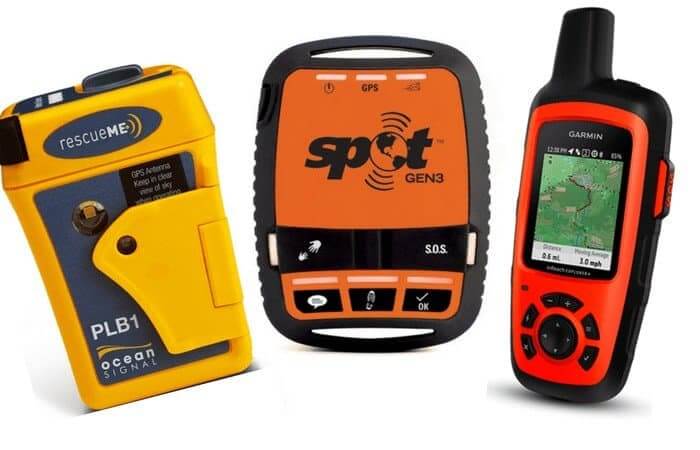
What if you don’t have phone reception, a PLB or didn’t tell anyone where you were going?
- Check your resources again and make a plan for your food, shelter and water.
- Try to position yourself in a clear area to make yourself visible to aircraft (see 6 above) and STAY PUT.
Buy an emergency device now
- BUY a PLB (Personal Locator Beacon) now
- BUY a Spot Tracker now
- BUY a Garmin InReach Explorer+
- BUY a Garmin InReach Mini
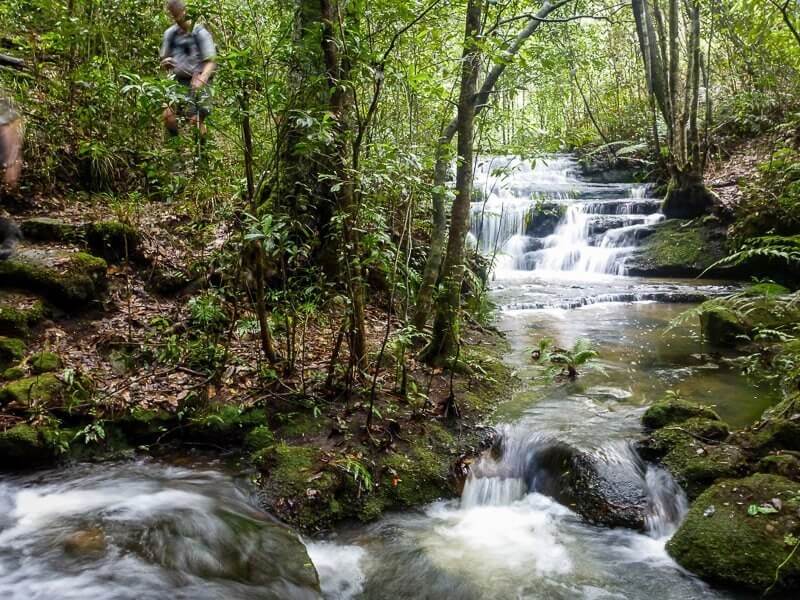
Myths about calling 000
- You need to use 112 on your mobile phone: In Australia, use 000. 112 is an older system and now those calls are simply re-routed to 000. However, 112 is a number that can be called from any mobile phone, anywhere in the world and will connect you with the local 000 equivalent.
- 112 gives you priority over 000: No, it doesn’t. You are simply redirected to 000.
- 000 or 112 can be called even when there is no mobile coverage: Unfortunately, no. You need to be in an area of mobile coverage (any carrier) to be able to make an emergency 000 call in Australia. However, if you have no coverage with your network, do still attempt to call 000 if needed, as if there is some coverage with a different carrier, the call will still be connected.
- 112 uses satellites to call not mobile network. Sorry, nope.
- You can send an SMS to either 000 or 112: Nope. No you can’t. Although 106 is the text relay service, it is connected to TTY equipment on a landline only. You can’t contact the Australian emergency services through SMS.
- 911 does not get re-directed to 000. In Australia, you must use 000. As there are landlines which begin with 911X-XXXX, the Aussie network recognises 911 as the start of a full number.
Further reading:

